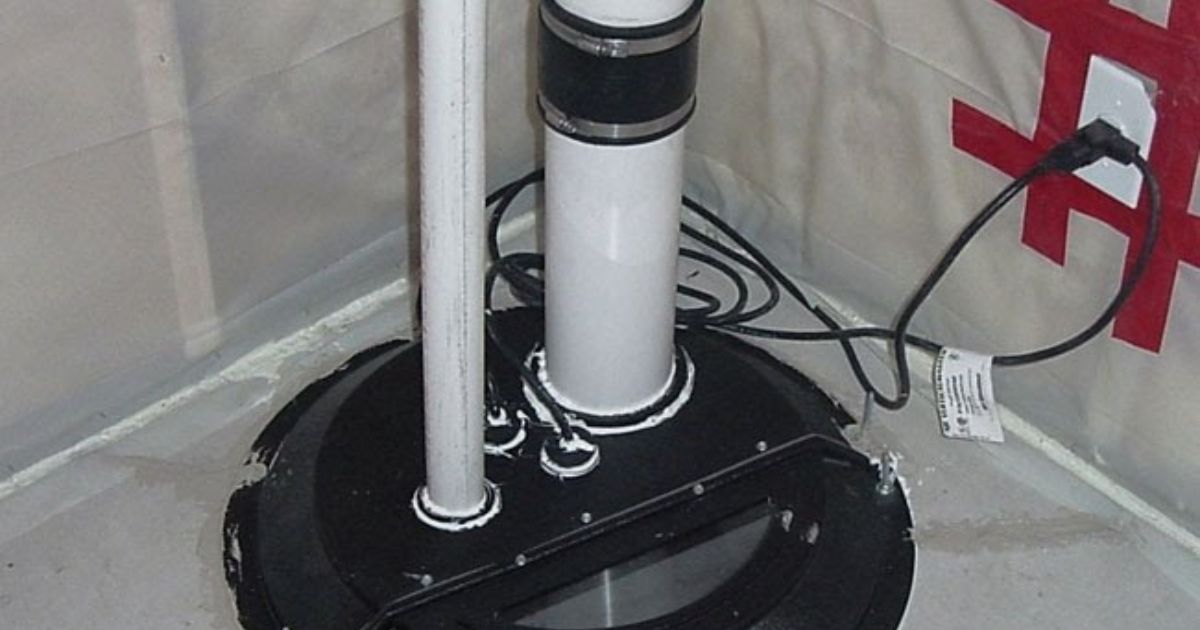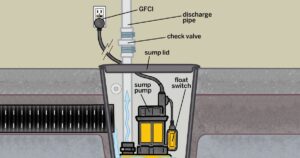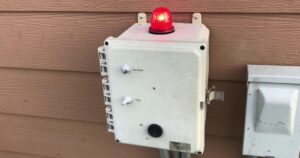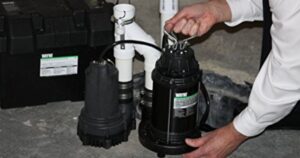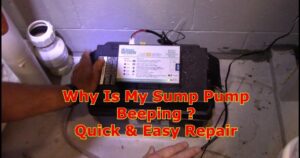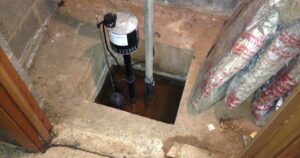In a world where indoor air quality is paramount, the threat of radon gas looms large. To ensure a safe and healthy living environment, it is crucial to seal the sump pump cover effectively. This article serves as a comprehensive guide, outlining the importance of proper sealing, the common methods employed, and expert recommendations for radon mitigation. By following the step-by-step instructions and implementing the tips provided, homeowners can safeguard their space from this invisible yet hazardous gas.
Key Takeaways
- Regularly sealing the sump pump cover is crucial to mitigate health risks associated with radon gas.
- Sealing the sump pump cover prevents radon gas from entering the living space.
- Implementing a comprehensive sealing strategy significantly reduces radon levels and minimizes health risks.
- Use foam sealant and a rubber gasket to create an effective barrier against radon gas.
Importance of Sealing Sump Pump Cover for Radon

Regularly sealing the sump pump cover for radon is crucial to mitigate the potential health risks associated with this harmful gas. Radon, a colorless and odorless radioactive gas, is a leading cause of lung cancer. It can seep into homes through cracks in the foundation, including those around the sump pump cover. By sealing the sump pump cover, you can prevent the entry of radon gas into your living space, ensuring a healthier indoor environment.
Sealing the sump pump cover helps create an effective barrier against radon gas infiltration. It prevents the gas from entering the basement and subsequently spreading to other areas of the home. By implementing a comprehensive sealing strategy, you can significantly reduce the radon levels in your home, minimizing the associated health risks.
Now that we understand the importance of sealing the sump pump cover for radon, let’s explore the common methods used to achieve this crucial task. How many watts is a sump pump?
Common Methods to Seal Sump Pump Cover
To effectively seal a sump pump cover for radon, there are several common methods that can be employed. One method is to use a foam sealant to fill any gaps or cracks in the cover. This creates an airtight seal and prevents radon gas from entering the living space. Another common method is to install a rubber gasket around the perimeter of the cover. This gasket acts as a barrier, preventing radon gas from seeping through any openings. Additionally, some homeowners choose to use a combination of foam sealant and a rubber gasket for added protection. It is important to ensure that the sump pump cover is properly sealed to effectively mitigate radon gas and maintain a safe living environment.
Tools and Materials Needed for Sealing
To properly seal a sump pump cover for radon, you will need specific tools and materials. Here are the essential items you will need:
- Caulk gun: A caulk gun is necessary for applying the sealant around the edges of the sump pump cover.
- Radon sealant: Use a high-quality radon sealant that is specifically designed to create an effective barrier against radon gas.
- Utility knife: A utility knife will come in handy for cutting and trimming the sealant to fit the size and shape of the sump pump cover.
These tools and materials are crucial for ensuring a proper seal that effectively prevents radon gas from entering your home. Now that you have gathered the necessary items, let’s move on to the step-by-step guide to sealing the sump pump cover.
Step-By-Step Guide to Sealing Sump Pump Cover
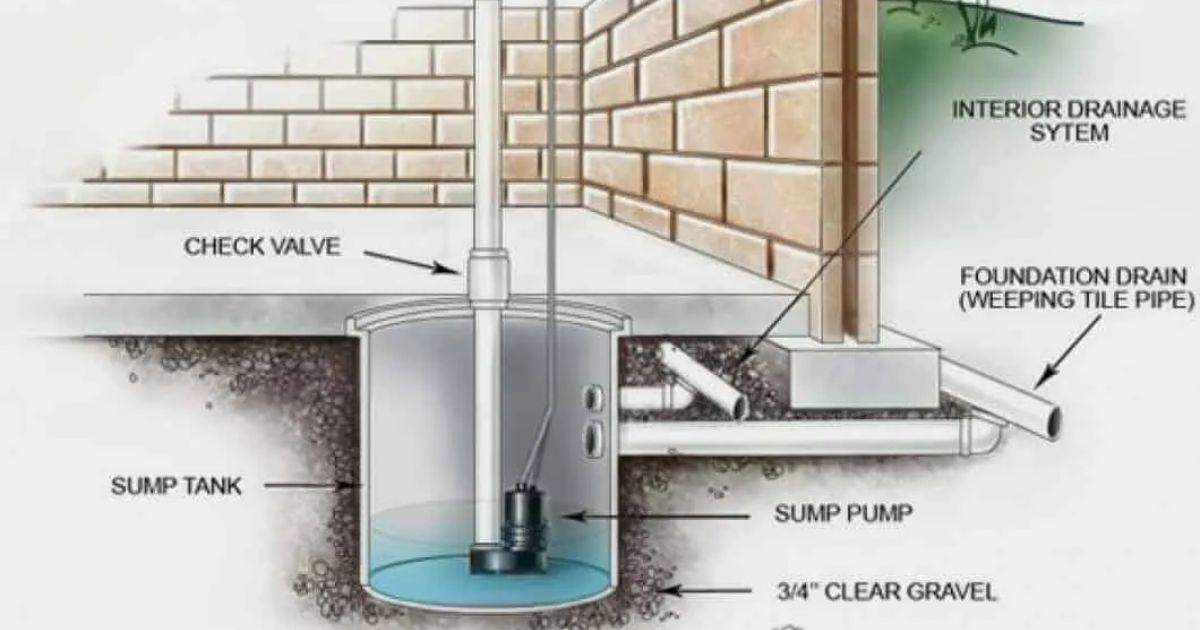
To begin sealing the sump pump cover for radon, gather the necessary tools and materials mentioned in the previous subtopic. Once you have everything ready, follow these step-by-step instructions to ensure a proper seal:
- Clean the sump pump cover thoroughly to remove any dirt or debris. Use a mild detergent and a soft brush to scrub the surface.
- Apply a bead of silicone caulk around the edges of the sump pump cover. This will create a tight seal and prevent radon gas from escaping.
- Place the cover back onto the sump pump and press it firmly to ensure it is securely in place.
- Use a screwdriver to tighten any screws or bolts that hold the cover in place. This will further secure the seal and prevent any leaks.
- Allow the silicone caulk to dry completely before testing the sump pump for radon levels.
Tips for Ensuring a Proper Seal
To ensure a proper seal for the sump pump cover, it is essential to follow these tips:
- Clean the surface: Before sealing the sump pump cover, make sure the surface is clean and free of debris. Use a cloth or brush to remove any dirt, dust, or moisture from the area. This will ensure a smooth and secure seal.
- Use a high-quality sealant: Choose a sealant specifically designed for sealing sump pump covers. Look for a sealant that is resistant to radon gas and has excellent adhesion properties. Apply the sealant evenly around the edges of the cover to create a tight seal.
- Check for gaps or cracks: After applying the sealant, inspect the area for any gaps or cracks. These can compromise the effectiveness of the seal. If you find any, reapply the sealant to fill in the gaps and ensure a proper seal.
Testing for Radon Levels After Sealing
After sealing the sump pump cover for radon, it is important to conduct a radon level test to ensure the effectiveness of the seal. Testing for radon levels after sealing is crucial for assessing whether the seal has successfully prevented radon gas from entering the home. The test involves using a radon detector, which can be either a short-term or long-term device. Short-term detectors are typically placed in the lowest livable area of the home for around 2-7 days, while long-term detectors are placed for a period of 90 days or more. The detectors measure the concentration of radon gas in the air and provide accurate results. It is recommended to follow the instructions provided by the manufacturer for accurate testing and interpretation of the results. If the radon levels are still high after sealing, further steps may be required to mitigate the radon gas. Regular radon level testing is essential to maintain a safe and healthy indoor environment.
Maintaining and Resealing Sump Pump Cover
Regular maintenance and resealing of the sump pump cover is essential for ensuring ongoing effectiveness in preventing the entry of radon gas into the home. By following these steps, homeowners can maintain a properly sealed sump pump cover:
- Inspect the cover regularly for any cracks, gaps, or signs of wear and tear.
- Clean the cover and remove any debris that may accumulate on or around it.
- Apply a high-quality waterproof sealant to any areas that require resealing.
Regular maintenance and resealing of the sump pump cover will help to maintain its integrity and ensure that it continues to effectively prevent the entry of radon gas into the home. By taking these simple steps, homeowners can have peace of mind knowing that they are actively protecting their home and their family from the dangers of radon gas.
Expert Recommendations for Radon Mitigation

The experts in the field of radon mitigation offer valuable recommendations for effectively reducing radon gas levels in homes. One of the key recommendations is to conduct a thorough radon test to determine the initial radon levels in the home. This test should be conducted in the lowest level of the home, preferably a basement or crawl space, as these areas are more susceptible to radon infiltration. Once the radon levels are determined, experts recommend installing a radon mitigation system, such as a sub-slab depressurization system or a sub-membrane depressurization system, to effectively reduce radon gas levels. Regular maintenance of these systems is also crucial to ensure their continued effectiveness. Additionally, sealing foundation cracks, gaps, and other points of entry for radon gas is recommended to prevent its infiltration into the home. By following these expert recommendations, homeowners can effectively mitigate radon gas and ensure a safe living environment for themselves and their families.
Frequently Asked Questions
What Is Radon and Why Is It Important to Seal the Sump Pump Cover for Radon?
Radon is a radioactive gas that occurs naturally in the soil and can seep into homes through cracks and gaps. It is important to seal the sump pump cover to prevent radon gas from entering the house, as prolonged exposure can lead to serious health issues.
Can I Use Any Method to Seal the Sump Pump Cover, or Are There Specific Methods Recommended?
There are specific methods recommended for sealing the sump pump cover to mitigate radon. These methods ensure airtightness and prevent radon gas from entering the living space.
Are There Any Additional Tools or Materials Needed Besides Those Mentioned in the Article for Sealing the Sump Pump Cover?
Additional tools and materials may be required to effectively seal the sump pump cover for radon. It is recommended to consult with a professional or refer to specific guidelines to ensure proper installation and adherence to safety protocols.
How Often Should I Test for Radon Levels After Sealing the Sump Pump Cover?
Radon testing frequency after sealing a sump pump cover depends on various factors such as geographic location, building age, and previous radon levels. It is recommended to test every 2 years or as advised by a radon professional for accurate results and safety.
Are There Any Specific Maintenance Tasks or Resealing Requirements for the Sump Pump Cover?
Specific maintenance tasks and resealing requirements for the sump pump cover may vary depending on the specific system and manufacturer recommendations. It is important to consult the manufacturer’s instructions or a professional for guidance on proper maintenance and resealing procedures.
Conclusion
In conclusion, sealing the sump pump cover for radon is a crucial step in mitigating radon gas in your home. By following the common methods and using the necessary tools and materials, you can effectively create a proper seal. Regular testing and maintenance are recommended to ensure the effectiveness of the seal. By taking these steps, you can protect your home and loved ones from the dangers of radon gas.
